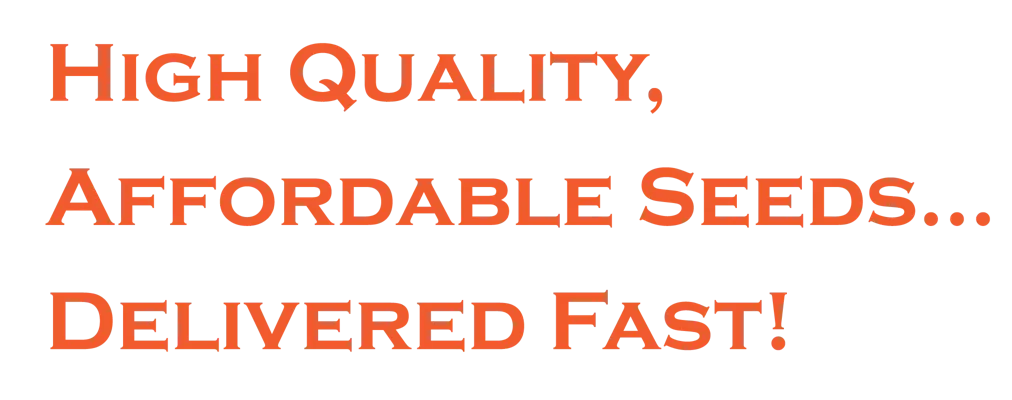 |
Written By Lara Wadsworth |
Summer is in full swing. July is here, and most of us are celebrating holidays, going camping, and (of course), tending to our gardens! Even though a lot is done in the spring for gardens, July is also brimming with potential. While heat and late-season pests can pose challenges, this month is perfect for sowing fast-growing veggies, succession planting, and getting a head start on fall crops. Just like June, keep track of your first fall frost date to ensure everything matures in time. Let’s dive into what you can do in July.
Understanding First and Last Frost Dates
July, just like June, is when every zone is counting down to the fall frost date. In a nutshell, the time between your last spring frost and your first fall frost determines your growing season window. Use the Farmer's Almanac or your local extension office to check your average frost dates. Even within a zone, your frost date may vary due to microclimates. Remember that other factors, such as elevation and weather patterns, can create microclimates that may cause your exact dates to vary significantly from the average listed for each zone . So, keep a close eye on the weather forecast for your area and take action if needed! The best source for new gardeners to understand this information as it relates to their area is your local extension office.
Remember, frost dates aren’t the only metrics important to plant selection and planting times. By July, zones 6 through 10 need to start thinking about the intense heat of summer that can stunt plant growth. The hot summer sun can be too much for some plants. When growing in these regions, consider using tools like shade cloth to reduce the stress your growing plants experience.
What are USDA Hardiness Growing Zones?
The United States Department of Agriculture (USDA) zone hardiness map assigns a zone number to each region of the United States based on the average winter low temperatures experienced annually. Your zone number helps you determine what perennial plants will thrive in your area. However, the information you gain from identifying your growing zone should also be paired with understanding your first and last frost dates, as this will determine the length of your growing season. USDA zones reflect average winter lows. However, for summer planting, use frost dates and your understanding of the local climate to inform your decisions. Two regions that fall within the same zone designation could still have very different summers! Keep both winter and summer conditions in mind.
Plan Ahead and Preorder Your Fall Bulbs Now!
What to Plant in July
Zone 3
July is typically the first full month of summer for residents in zone 3. However, weather patterns are unpredictable (especially in northern regions), and it is essential to keep a close eye on the weather forecast. Tender plants such as tomatoes, cucumbers, and okra are unlikely to survive an unexpected frost without protection.
- First Frost Date Window: Early to Mid-September
- Approximate Weeks Until First Frost: 9-13
- Seeds to Start Indoors: Microgreens,quick herbs, and indoor starts for fall transplanting. Get your cold-season crops started indoors towards the end of the month, like brassicas (broccoli, cauliflower, cabbage). This timing will have them ready to go outside once the heat of summer passes and fall planting starts up.
- Seeds to Sow Outdoors: Direct sow quick cool-season crops like Chinese cabbage, radishes, arugula, mustard greens, and lettuce. Afternoon shade can be helpful for these. In areas where you are not currently growing crops, sow cover crops like annual rye, vetch, or buckwheat to improve the soil for next spring. Direct sow any other warm-season crops outdoors that can mature before the frost hits. This could include herbs, cucurbits (such as cucumbers and summer squash), and legumes (including beans and peas).
Zone 4
Temperatures are rising in zone 4 through July, but they aren’t too hot for planting. July is the perfect month for gardening in this zone. By July, you should have transplanted everything outdoors that you had started inside. It is also a great time to plant any direct-sow crops so long as they fall within the number of days left in your growing season.
- First Frost Date Window: Mid-September to Early October
- Approximate Weeks Until First Frost: 11-15
- Seeds to Start Indoors: Start brassicas like kale, broccoli, Chinese cabbage, and late cabbage to have them ready for fall planting. Start herbs, microgreens, and sprouts for use throughout the summer season.
- Seeds to Sow Outdoors: Continue with the succession planting of fast-growing veggies like leaf lettuce, radishes, and spinach (in the shade). Direct sow root crops like beets, turnips, and carrots if you haven’t already. Plant out beans and cucurbits early in July, whether from seed or pre-started from earlier in the year. Transplant tomatoes, eggplant, peppers, and other nightshades.
Zone 5
Summer is finally in full swing for zone 5. The days are warm and the nights are cool, but it typically isn't too hot or cold either. Most garden plants thrive in this environment. In July, you should be focusing on maintenance and harvesting spring vegetables. You might also sow your last round of succession planting spring crops before the weather gets too warm next month.
- First Frost Date Window: Mid to Late October
- Approximate Weeks Until First Frost: 15-19
- Seeds to Start Indoors: Start brassicas and hearty greens indoors to prepare for late summer or fall transplanting. Microgreens, sprouts, and herbs are also great options for indoor growing this time of year.
- Seeds to Sow Outdoors: Direct sow carrots, beets, turnips, and radishes. Some areas may want to consider growing these crops in partial shade or covering them with shade cloth if temperatures are expected to be high. Succession plant beans and okra. Sow quick legumes and herbs like cilantro, arugula, mustard, and basil. Get melons, cucumbers, and squash in if you haven’t already.
Zone 6
July in zone 6 can be mild and enjoyable, or swelteringly hot. It all depends on the weather patterns that year and other microclimate factors. You're at a sweet spot where you can still plant warm-season crops and sneak in some short-season greens too.
- First Frost Date Window: Late October
- Approximate Weeks Until First Frost: 17-21
- Seeds to Start Indoors: Sow herbs, microgreens, and sprouts indoors. Herbs like cilantro perform well indoors because they are sensitive to the summer heat. Try growing them in pots or as microgreens to accompany your favorite summer foods.
- Seeds to Sow Outdoors: Beans, cucurbits (squash, melons, cucumbers) thrive when directly sown now. You can also sneak in another round of fast-growing greens like lettuce, chard, or spinach, just provide them with some afternoon shade to help them avoid bolting.
Zone 7
Zone 7 gardeners are hitting their stride in June. The weather is warm, the days are long, and your garden is probably buzzing with activity. If you’ve kept up with spring planting, most of your summer crops should already be in the ground. But don’t worry if you’re just getting started, there’s still plenty of time to enjoy a bountiful harvest.
- First Frost Date Window: October to November
- Approximate Weeks Until First Frost: 18-22
- Seeds to Start Indoors: Start herbs, microgreens, and sprouts for a quick, high-nutrient-density harvest. Sprouts and microgreens make a great addition to traditional summer sandwiches, BBQ, and salads.
- Seeds to Sow or Transplant Outdoors: Legumes like beans, as well as beets, carrots, turnips, cucurbits like cucumbers and squash. Consider brassicas like cauliflower and cabbage for a fall harvest. Plant quick-growing greens like lettuce, but provide shade during the midday hours. Plant heat-tolerant greens like amaranth and Malabar spinach. Herbs like basil, thyme, and oregano will love the warmth. Be sure to mulch well and consider some shade for tender plants during the hottest parts of the day.
Zone 8
“Sweltering” might be one word to describe zone 8 in July. Now we need to start thinking about the heat as a limiting factor for some plants. June is still prime growing time, but your spring crops are going to start struggling while warm-season and heat-resistant varieties are going to start thriving (so long as they are getting enough water). It will soon be time to prep fall transplants indoors.
- First Fall Frost Date Window: November - December
- Approximate Weeks Until First Fall Frost: 20-24
- Seeds to Start Indoors: You can start brassicas like broccoli and cauliflower indoors late in the month for transplanting in the fall. The indoors is also the perfect place to keep growing herbs, sprouts, and microgreens throughout the heat of summer. These crops can be ready in a matter of days to weeks for a refreshing touch to your summer meals.
- Seeds to Sow or Transplant Outdoors: Plant cucurbits like squash and cucumber. Also, direct sow southern peas, and heat-tolerant herbs like basil and rosemary. Some areas may plant their first round of Chinese cabbage, kohlrabi, and rutabaga.
Zone 9
Intense summer sun and soaring daytime highs are characteristic of a zone 9 in July. July is a bit of an endurance game. It has been hot for a while now, and it’s not likely to let up for another couple of months. The intense heat can slow growth, but it's still a productive month if you pick the right crops. Shade and water are your best friends now.
- First Frost Date Window: November - December
- Approximate Weeks Until First Fall Frost: 21-26
- Seeds to Start Indoors: Start thinking about your fall crops, such as brassicas and other cool-season vegetables. Get them growing indoors at the end of the month to be prepared for late summer transplanting for fall or winter harvesting. You can also take advantage of sprouts and microgreens at this time of year. They are a great, quick way to beat the heat and continue having a fresh supply of greens.
- Seeds to Sow Outdoors: Basil, peppers, eggplant, cucurbits (such as melons and squash), beans, and corn. Plant out any other warm-season annuals you haven’t yet, including peppers and okra. Consider trying out some unique, heat-tolerant greens, such as roselle or malabar spinach.
Zone 10
July is about protecting the plants you currently have from the extreme heat, harvesting some of them before they wither or bolt, and planning what you will do in September and October for your fall garden. It is not a good time to plant much of anything new outside at this point. Focus on heat-resistant crops and varieties to get you through this time. Be sure to keep everyone, the plants, and yourself well hydrated!
- First Frost Date Window: Does not typically experience frosts.
- Approximate Weeks Until First Frost: N/A
- Seeds to Start Indoors: Only things you can start and finish indoors, such as microgreens, sprouts, baby greens, and herbs. It is still a bit far out to be starting fall crops. Instead, try your hand at growing leafy greens as microgreens for mixing into salads, stuffing sandwiches, or making refreshing wraps.
- Seeds to Sow or Transplant Outdoors: Nothing if you can avoid it. Only plant things outside this month out of absolute necessity, and do all you can to protect them from the scorching midday heat. Some areas of zone 10 can have success with high heat-tolerant crops like amaranth and malabar spinach.
For most zones, July is brimming with possibility. No matter where you are, you are likely still reaping the benefits of your spring and early summer efforts. This month is your chance to replant summer favorites, begin your fall garden prep, and keep your soil and plants healthy through good mulching, watering, and a little shade. Most importantly, enjoy your time in the garden. Let’s keep it growing!
 |
Lara Wadsworth, True Leaf Market Writer |
I am a native of Southwestern Michigan, where I currently reside. I love all things plants! After completing a Bachelor's Degree in Horticulture, I found a dream work-from-home job that allows me to share my passion. Now, I spend my days writing for TLM, playing with my dog, eating delicious food with my husband, and plotting my next landscape or gardening move. I believe everyone should get down and dirty in the soil now and then. Happy Gardening!


























0 comments
No comments yet! Be the first to start a conversation.